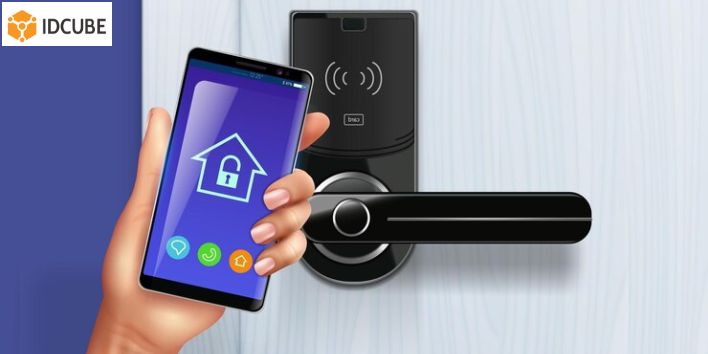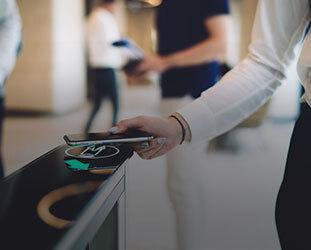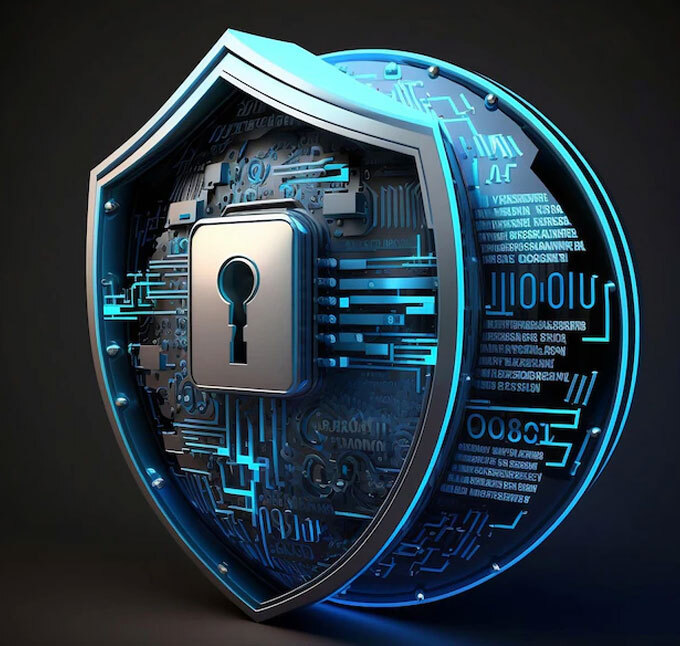
How Secure Access Control Systems Improve Workplace Safety?
Workplace safety has become a key factor in today’s fast-changing and unpredictable environment. Business organizations are finding that the work environment needs to be safe and have strong security measures to protect its employees and company assets. A secure access control system enables the strengthening of workplace safety by controlling who accesses certain areas within the facility.
IDCUBE Secure Access Control Systems are the cornerstone of workplace safety improvements. Because they manage entry, they also monitor activity and produce a wealth of information about access points throughout an enterprise. Installation of these systems can cut in half security risks, improve emergency preparedness, and create a safer work environment.
What Is A Secure Access Control System?
Access control systems safely access space and manage its use. Technology can come in many forms, including a key card, biometric scanner, or mobile access solution. Each form offers different levels of security and convenience for different types of organizations.
The basic elements of a secure access control system include:
Readers Devices that verify credentials.
Contain the following
– Authentication credentials: these can be key cards, biometrics or even mobile devices used to enter
Controllers: Hardware that access and process all access requests
Management Software: Allows administrators to define permissions, monitor activities and generate reports.
How They Work: Access Entry Control Systems Secure Provide or deny access based on decided rules and permission. A reader verifies the user’s credentials by checking them against a database. Entry is permitted if there is a match, and entry is denied if there isn’t.
Key Benefits of Secure Access Control Systems for Workplace Safety
1. Deny Unauthorized Access
One major advantage of secure access control systems is the locking of access to high-security zones. Organizations can, therefore, prevent unauthorized persons from accessing secure zones, which may subsequently reduce cases of theft, sabotage, or data breaches.
2. Monitoring in Real-Time and Alert System
Such systems also track entry and exit at any given facility in real-time. In case of suspicious actions or unauthorized access attempts, security personnel are alerted, and they can respond to the threat in real time. Overall safety is enhanced and proactive management of security is possible.
3. Enhanced Response to Emergency
Secure access control systems can, in emergencies, quickly facilitate lockdown, determine the location of personnel, and provide vital information to first responders. This capability is critical to ensuring the safety of employees who experience accidents or other unanticipated events, such as natural disasters or even security threats.
4. Visitor Management
Also, they assist in visitor control. More precisely, they ensure escorts with minimal entry rights, furthering greater security in an organization while allowing necessary access for business operations.
Enhanced Features That Increase the Safety of a Workplace
1. Multi-factor Authentication
Multi-factor authentication combines a myriad of authentication procedures, like a key card and a fingerprint scan. It, therefore, provides an added layer of security to ensure that only authorized people enter, thus reducing the possibility of unauthorized entry much further.
2. Integrates with Other Security Systems’
IDCUBE Secure access control systems can be merged with other security systems that exist within a building. These include CCTV, fire alarms, and intrusion detection systems. When integrating such systems, all security incidents are coordinated through various appropriate responses that ensure full safety.
3. Time-Based Access Control
Organizations can limit access to specific areas to certain times using time-based access settings. This functions to minimize the risk involved in after-hours incidents by limiting only authorized personnel to remain at the facility when less populated.
4. Role-Based Access Control
The granting of access permissions based on a role ensures that, in any organization, employees only receive access to those areas necessary for the execution of their job functions. As such, this strategy minimizes security risks as it provides the least exposure to sensitive areas, thus ensuring efficient management of accesses.
Case Studies: Real-world Applications of Secure Access Control Systems
1. Corporate Office Example
Piramal Group improved the safety of their environment through a secure access control system. The use of key cards and a visitor logging system ensured that unauthorized access was minimized and improved confidentiality security in areas.
2. Healthcare Facility Example
Access control entry systems in health care protect sensitive areas, including medicine storage and patient records. This is to ensure that the organization complies with the regulations set and patients are protected from unauthorized individuals.
3. Sample for Defence Institution
In DRDO access control systems are put in place to prevent intruders from penetrating buildings while controlling staff’s access to restricted areas and trespassing.
How to Implement a Secure Access Control System at Your Workplace?
1. Analysis of the Security Needs
Firstly, you begin with an analysis of the current security protocols in your organization. Determine where there is a need for improvement and what specific needs your organization may have regarding access control.
2. Choosing an Appropriate System
An access control system to be chosen must have considerations on scaling the system, ease of use, and integrations. A system able to grow with your organization is best suited for the long-term.
3. Installation/Training
Proper installation, training is very critical to ensure the efficiency of use of the system. Employees should be taught how to use the system as well as educated on the security protocols that will be in place.
Most Common Problems and Their Solutions
1. Resistance to Change
Resistance by employees can also be an issue. Communication on the benefits, as well as training sessions, can minimize apprehension about the new system and make employees friendlier to the new system.
2. Technical Issues
These include normal technical problems: system failure or integration issues. An established provider on installation and support would alleviate these problems.
3. Cost Concerns
Acquisition of an access control entry system with a secure interface may at first seem prohibitively expensive but doing the cost-benefit often throws open a wide divergence in long-term returns on investment in terms of reduced loss through theft, liability and improved safety.
Final Thought
In a nutshell, it can be said that secure access control systems contribute primarily to the workplace safety of an organization. It denies entry without authorized permission it enables in situ monitoring; it also aids emergency response efforts. As more organizations look after safety, these systems are essential.
Do not wait until an incident occurs, and then you try to fix security problems. Assess your existing workplace security and replace it with a secure access control system by IDCUBE that protects your resources and personnel and ensures a safe working environment.

 USA
USA
 UAE
UAE
 IN
IN









